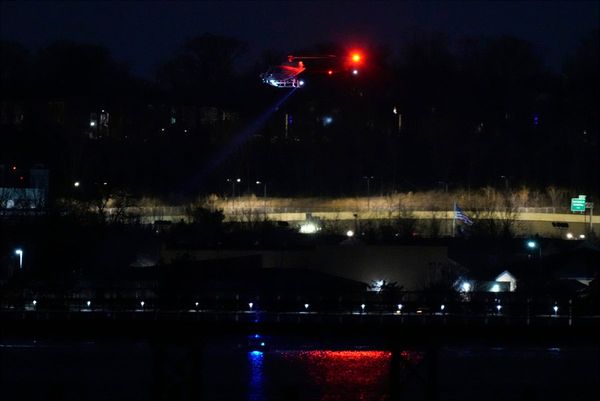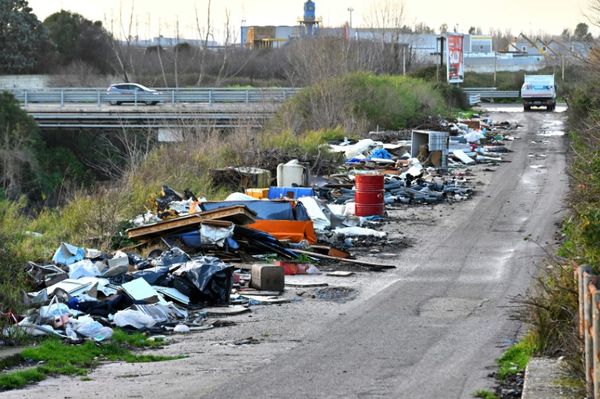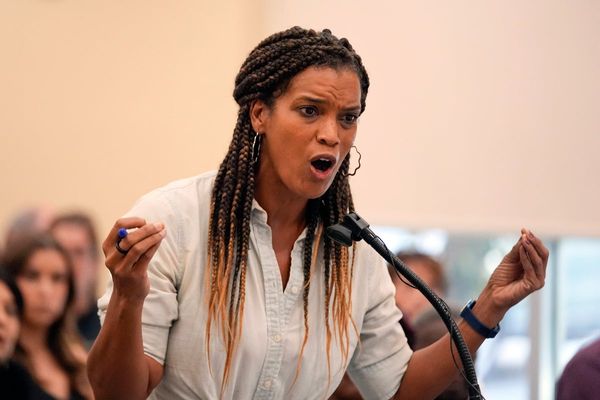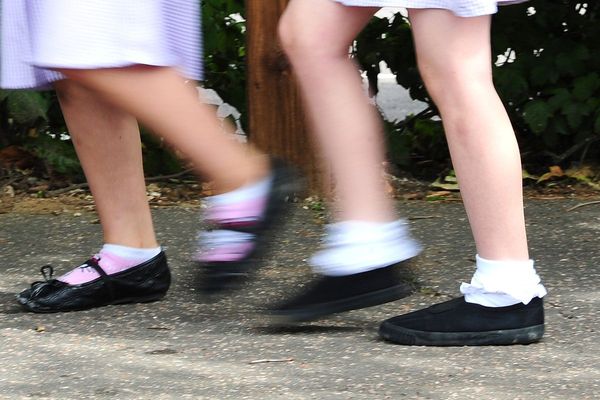
Leaders who take their party to office are usually still in good shape a year after their election win, and Anthony Albanese was no exception when he reached last month’s anniversary. Until that point, at least, mistakes are ignored or forgiven, the bad news is still their predecessor’s fault, and the vanquished party remains a rabble struggling to work out what it stands for.
All the better when the incoming government employs its new-found authority to trash the former outfit’s legacy, a task the current administration has been discharging with some vigour.
Pollsters, meanwhile, have the government way ahead in two-party-preferred terms and the prime minister trouncing the opposition leader on personal ratings. This too is par for the course.
Tony Abbott, the most recent of this government-from-opposition species, was an outlier. Like Albanese, he had never enjoyed high personal ratings, but unlike this incumbent his post-election boost was modest. Within months of the September 2013 election the Labor opposition was ahead, and it largely remained there until Abbott was replaced by Malcolm Turnbull in 2015.
But the three incoming PMs before Abbott, Kevin Rudd (elected in November 2007), John Howard (March 1996) and Bob Hawke (March 1983), all generated voting-intention numbers and personal ratings during their first twelve months that peaked above anything seen under Albanese.
At this point in Rudd’s tenure, the GFC stimulus payments were starting to arrive in voters’ bank accounts. That financial calamity gave much-needed purpose to his leadership, which had seemed trapped in a news spin-cycle, addicted to quickly devised policy announcements.
Howard in April 1997 was a long way from his Port Arthur–elevated honeymoon, had three embarrassing ministerial resignations under his belt — and four more to come, mostly victims of his strict code of ministerial conduct — but his first budget had been very well received (much more, from surveys, than this year’s) and had worked brilliantly as a political exercise in delivering bitter medicine and blaming it on thirteen years of Labor. Still, by the one-year mark his personal ratings and the government’s polled two-party-preferred leads had slid to slightly below Albanese’s and Labor’s today.
By the end of 1997 the opposition was ahead, assisted by the government’s embrace of a GST and Democrats leader Cheryl Kernot’s defection to Labor.
Further back, Hawke was still riding high in early 1984, even if he was disappointing the true believers who had expected more Whitlamesque cage-rattling. His personal and party ratings remained stratospheric — until he called an election for December and the gap gradually narrowed to a modest victory. Howard, of course, after a shaky first re-election in which he lost the national two-party vote, went on to have the last and longest laugh.
Ultimately the GFC-induced fiscal problems proved diabolical for the Rudd government, providing a jarring contrast to the boom and the surpluses under Howard. On top of that, treasurer Wayne Swan was about as woeful a chief economic communicator as could be imagined.
What about the current government? According to the polls — and unlike Rudd’s and Julia Gillard’s, but like Hawke’s a lot of the time — it is generally seen as a better economic manager than the opposition. All else being equal, two strands often make it hard for Labor to do well on this rather important measure: the Liberals are generally seen as more economically responsible; and a party in office will score better than it does in opposition. I can’t think of a time when a Coalition government was not viewed as superior on economics, but there have been plenty of times when Labor governments weren’t.
The before-and-after economic situation around the 2022 election has been very different. By pure luck, this government can boast the first surplus in fifteen years. Treasurer Jim Chalmers learned his politics at the feet of Swan, but from such dire beginnings has developed into an effective public politician. His “trillion dollars of debt” mantra — as unfair as the “debt and deficits” narrative Abbott used against Rudd and Gillard — undoubtedly has at least some persuasive power.
And the prime minister? What are we to make of him?
Albanese’s rise to the top of his party was driven not by popular demand — he was little-known outside the political bubble — but by wheeling and dealing. It was his turn. As a factional boss, and someone immersed in politics his whole working life, his timing was brilliant: he reached the peak when a highly winnable election was in the offing. Remaining opposition leader for three years was arguably the bigger challenge.
America’s longest-serving president, Franklin D. Roosevelt (1933–1945), was once characterised as possessing “a second-class intellect but a first-class temperament” (a description that might apply even more aptly to Joe Biden). Albanese’s intellect is better than that, but unlike most predecessors he doesn’t seem to be a policy wonk or a details man.
From closer to home comes a 1996 quip from political commentator Cate McGregor (sometimes wrongly attributed to the late Labor speechwriter Graham Freudenberg): that new Labor leader Kim Beazley was the first since Ben Chifley “who doesn’t have a major personality disorder.”
It’s a good line when you think of the parade of grandiosity, narcissism and exploding egos we’ve witnessed, especially if we extend McGregor’s words through to Rudd. Albanese would sit in the Beazley category. But does it make for a good national leader?
We saw from 2019 to 2022 that Albanese has a realistic if unexciting view of what drives changes of government. Not for him the wild tales of opposition leaders dazzling the electorate with feats of derring-do, engaging the enemy in hand-to-hand combat on values, winning the hearts of the middle Australians who hold up the scorecards on election day. (The most obvious of this variety was Mark Latham, 2003–04.)
In reality, federal changes of government tend to occur when voters wish to dispose of incumbents and don’t find the alternative too threatening. In both 1983 and 2007 that fact was camouflaged by the extraordinary personal popularity of Labor’s leader — Hawke and Rudd respectively — though it ultimately had a questionable impact on actual votes. (In both cases the massive polled leads narrowed dramatically by election day.)
Albanese in opposition set no one’s pulse racing and never enjoyed high personal ratings or huge voting-intentions leads. Which means, one imagines, that he commenced his prime ministership without Rudd-like delusions of electoral grandeur.
He had plenty to be modest about. The election of 21 May 2022 was the first in which a party took office from opposition despite suffering a primary vote swing against it. Both sides recorded lows not seen since the second world war, and the winner lost the primary vote by 3 per cent. Preferences from a record-high Greens vote flowed 86 per cent to Labor, and it took office with a two-party-preferred vote of 52.1 per cent, the smallest for a federal change-of-government election since 1949.
A vague, bland quantity, Albanese got out of the way of electors’ anger and allowed the votes, either directly or through preferences, to flow through to him and his party. The electorate’s “pox on both their houses” attitude was also reflected in the record-sized crossbench.
But now Albanese is prime minister — and a rather well-regarded one at that, at least for the time being.
“Small target,” coined in 1996, is not the only Howard comparison Albanese invites. Both are decidedly charisma-free and not particularly eloquent, and so our storytellers have settled on their very ordinariness as explainers of their success. But Howard had shown more policy ambition by this stage. His government broke promises and blamed it on the Keating government and its finance minister, who was now opposition leader.
Howard also enjoyed a much friendlier Senate. While the current one’s “progressive majority” excites some Labor true believers, it is highly problematic for the government. Legislation can only be passed with the cooperation of either the Coalition or the Greens plus someone else (most likely ACT independent David Pocock). That’s not as difficult as Rudd experienced during most of his first term, when (if the Coalition opposed) the government needed the Greens plus Nick Xenophon plus Family First’s Steve Fielding, but it’s still very restrictive.
Further back, Hawke had a one-stop option in the “centrist” Democrats. Howard (before his 2005–07 Senate majority) had it even easier, able to choose either the Democrats or someone else.
Unlike under Julia Gillard, the Greens currently have no incentive to make life easy for the government. In fact, product differentiation — being seen to drag Labor to its positions — is the chief string in the minor party’s electoral bow. We are currently seeing this play out with housing policy, but it will afflict other issues in the years to come.
Given the reality of the upper house, perhaps there’s little point in trying to do too much. The Abbott government’s first budget showed the disaster that can come from broken election promises jammed in the Senate: the odium of unpopular policies without the payoff of having those policies settled into law.
So maybe the Senate partly explains the government’s policy timidity.
There is one area in which Albanese does appear to differentiate himself from recent predecessors: his refusal to get trapped in the twenty-four-hour news cycle. This afflicted Rudd most obviously, but also most prime ministers since. The idea that the media beast can’t be ignored, that it must be fed or it will devour you, enjoyed much currency only a few years ago but is little-heard now.
Is this the product of a level-headed PM and his office, or has the nature of the beast changed? Is Albanese just getting an easy media run (outside News Corp) — and if so, will it turn eventually?
In the past, prime ministers’ longevity (and treasurers’) has been underpinned by economic booms, which are mostly dependent on the international climate. That precondition doesn’t seem likely in 2023 or the foreseeable future. The inflation, the declining real wages, the high interest rates and the housing shortage aren’t going away. The possible international recession will continue to hover threateningly.
Can we detect in this prime minister a Kevin-like aversion to jeopardising the strong polls? Rudd also began his term determined not to break campaign promises, but he eventually ended up doing so closer to the next election, when it was harder to sheet it home to the defeated government. Rudd, instead of developing the authority that comes from making voters eat their greens, ended up being seen as a prime minister afraid of making difficult decisions.
We are only one year in, which as past governments have shown tells us nothing about how things will pan out. And we’ve not seen how Albanese copes under pressure, in difficult times. They will come, sooner or later. •
The post How far will level-headedness take Anthony Albanese? appeared first on Inside Story.







